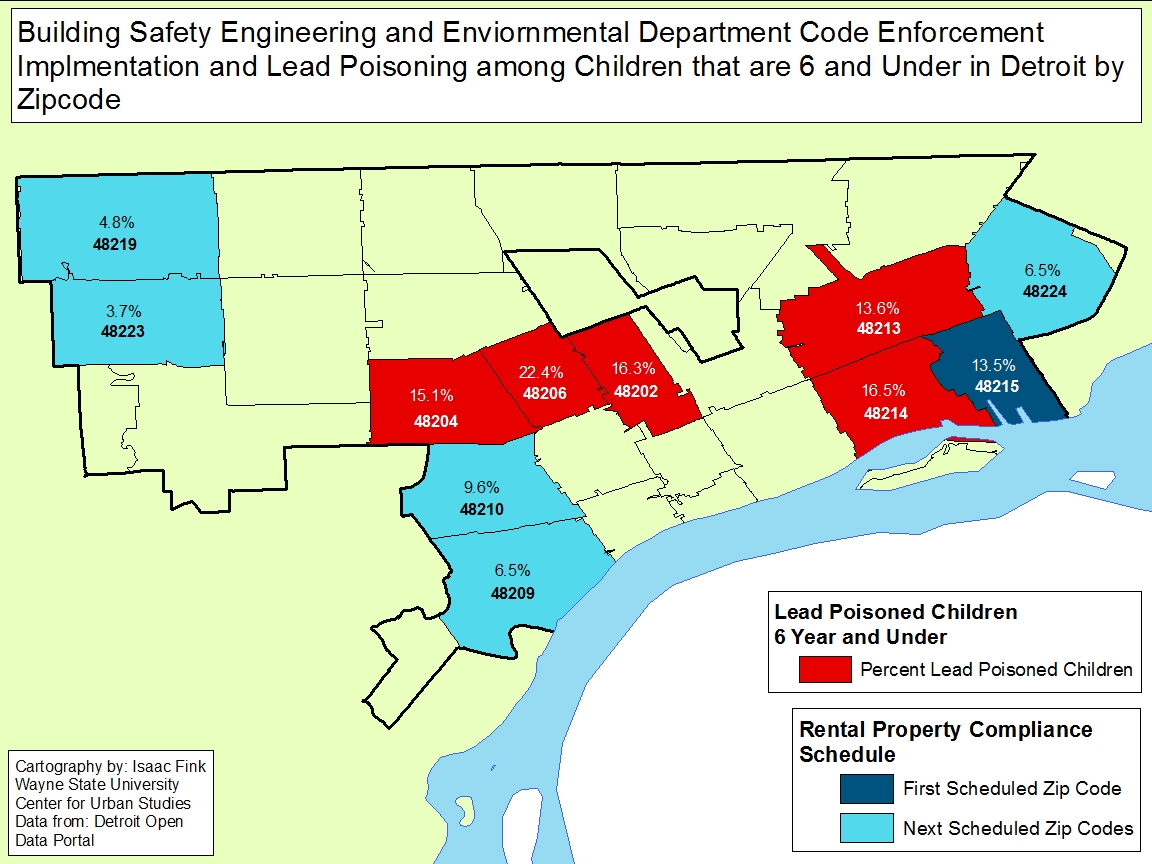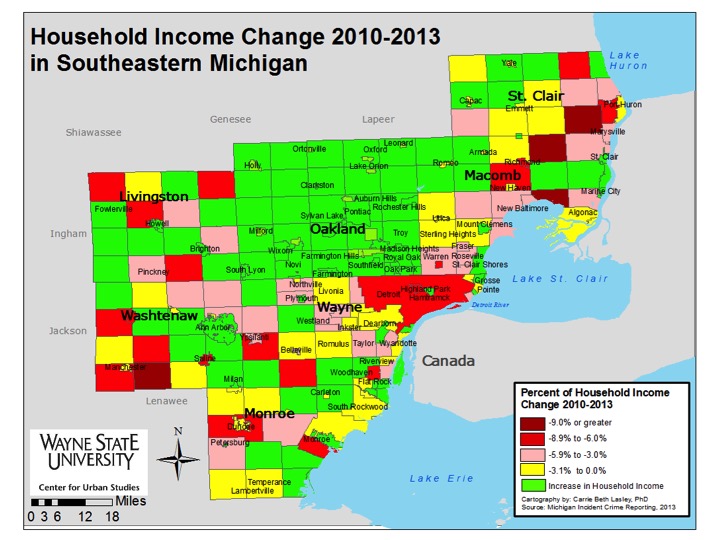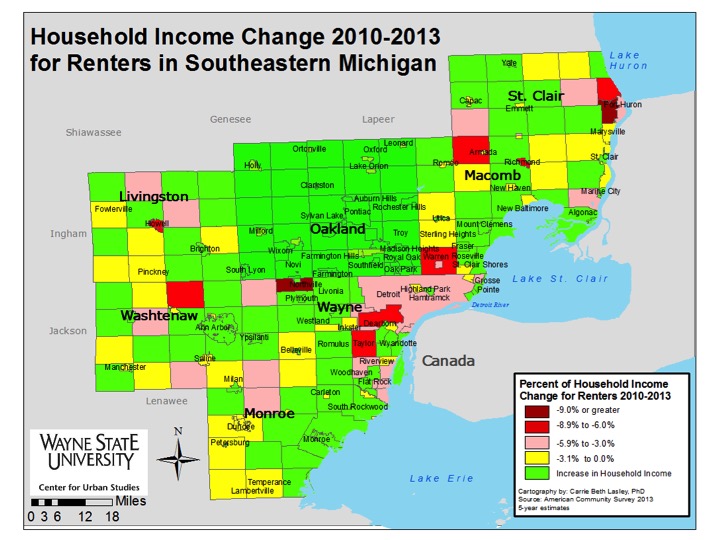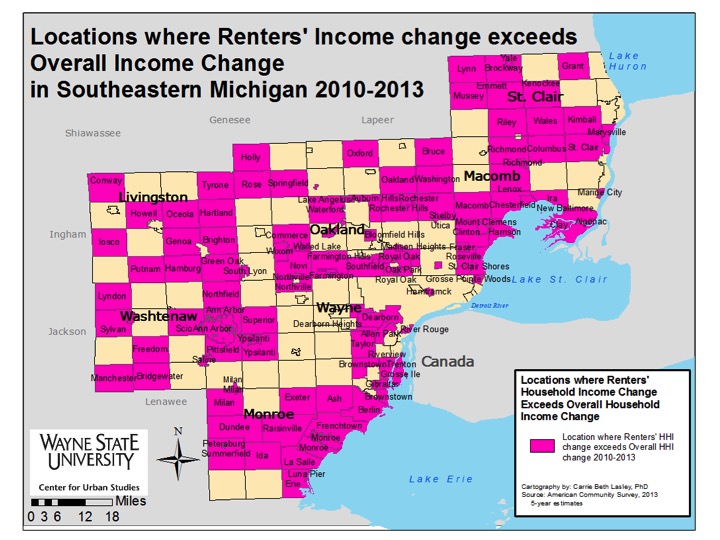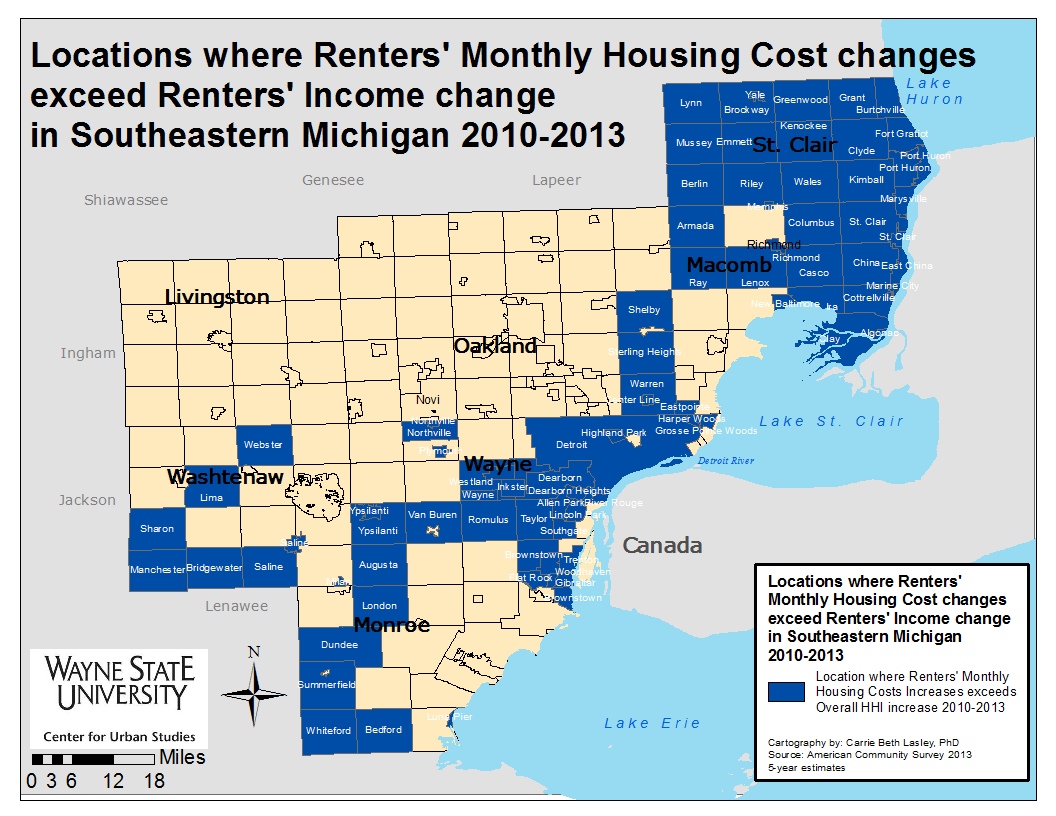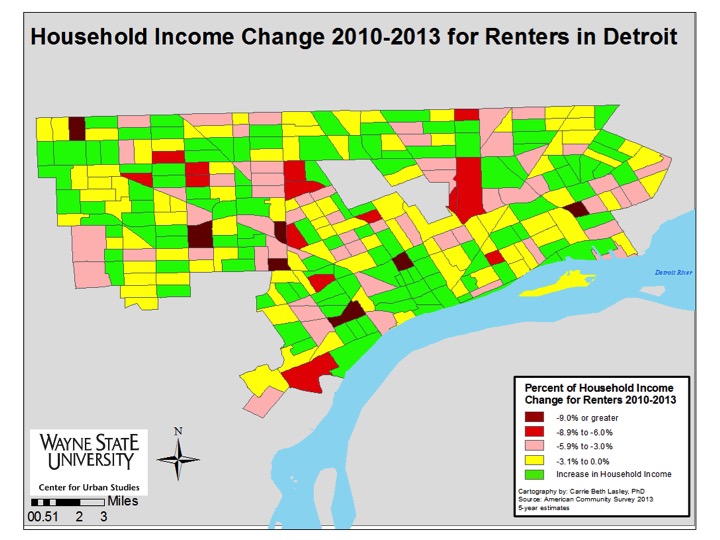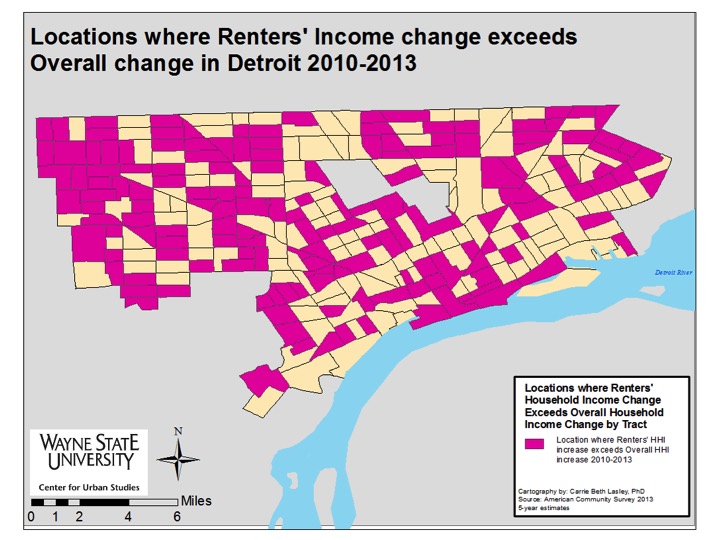The City of Detroit recognizes that lead poisoning prevention is multi-faceted, which is why an Interagency Lead Poisoning Prevention Task Force was created earlier this year, the same time the codes rental properties in the City were tightened. The task force will eventually align future rental code enforcement target ZIP codes with the zip codes where there is a high prevalence of elevated blood lead levels in children. Currently though, the rental code compliance program overseen by the Buildings, Safety, Engineering and Environmental Department (BSEED) is focusing zip codes that do not have among the highest percentage of children 6 years of age and younger with lead poisoning.
The zip codes BSEED is currently enforcing compliance on are: 48215, 48224, 48223, 48219, 48209 and 48210. These six zip codes are the first priorities of the City’s new, stricter rental code ordinance that seeks to ensure all rental properties are properly registered, up to code and have obtained a certificate of compliance. One aspect of the new ordinance is that all rental properties, despite the length of their certificate of occupation, must have annual lead hazard inspections. According to the ordinance, the annual assessment can be waived only if the property owner has taken more long term or permanent measures to abate the lead.
While this ordinance does make lead assessments and abatements a priority for all rental properties, the zip codes identified to have among the highest percentage of children 6 years of age and younger are not included on the initial and current compliance schedule, which is available here (link to BSEED). According to the City of Detroit, the 48210 zip code is to be launched into the new compliance program on Aug. 1, 2018 and is scheduled to have all rental properties in compliance with the new ordinance by Feb 1, 2019. This is certainly a step in the right direction, however, the zip codes with among highest percentage of children with lead poisoning have yet to be placed on the compliance list. The City of Detroit does state though that all rental properties in the City must be in compliance with the new ordinance by the end of 2020.
The zip codes where recent data shows there is the highest prevalence of elevated blood lead levels in Detroit’s children are: 48202, 48204, 48206, 48213 and 48214. According to the City of Detroit Health Department, these zip codes will be included in the new rental property compliance program, but all also be part of the Lead Poisoning Prevention Pilot Program, which is being spearheaded by the Interagency Lead Poisoning Prevention Task Force. As part of this pilot program, there will be door-to-door outreach in the identified zip codes. This outreach will provide occupants, particularly those with children or who are pregnant, with information on how to identify potential lead hazards and protect themselves from the risks. Lead testing will also be provided through this program.
As the information above shows, the City of Detroit has taken steps through both rental code enforcement and direct outreach facilitated through the Health Department. However, direct coordination between the initial enforcement phase of the new rental property compliance ordinance and the Interagency Lead Poisoning Prevention Task Force has yet to fully materialize. The map below highlights just this. The zip codes in red are the ones the City has identified as having the prevalence of elevated blood lead levels in children. The zip codes in blue are the ones that have been identified for the most immediate rounds of registration and compliance for the new rental code.
The information provided in the map below is from the City of Detroit’s website.
